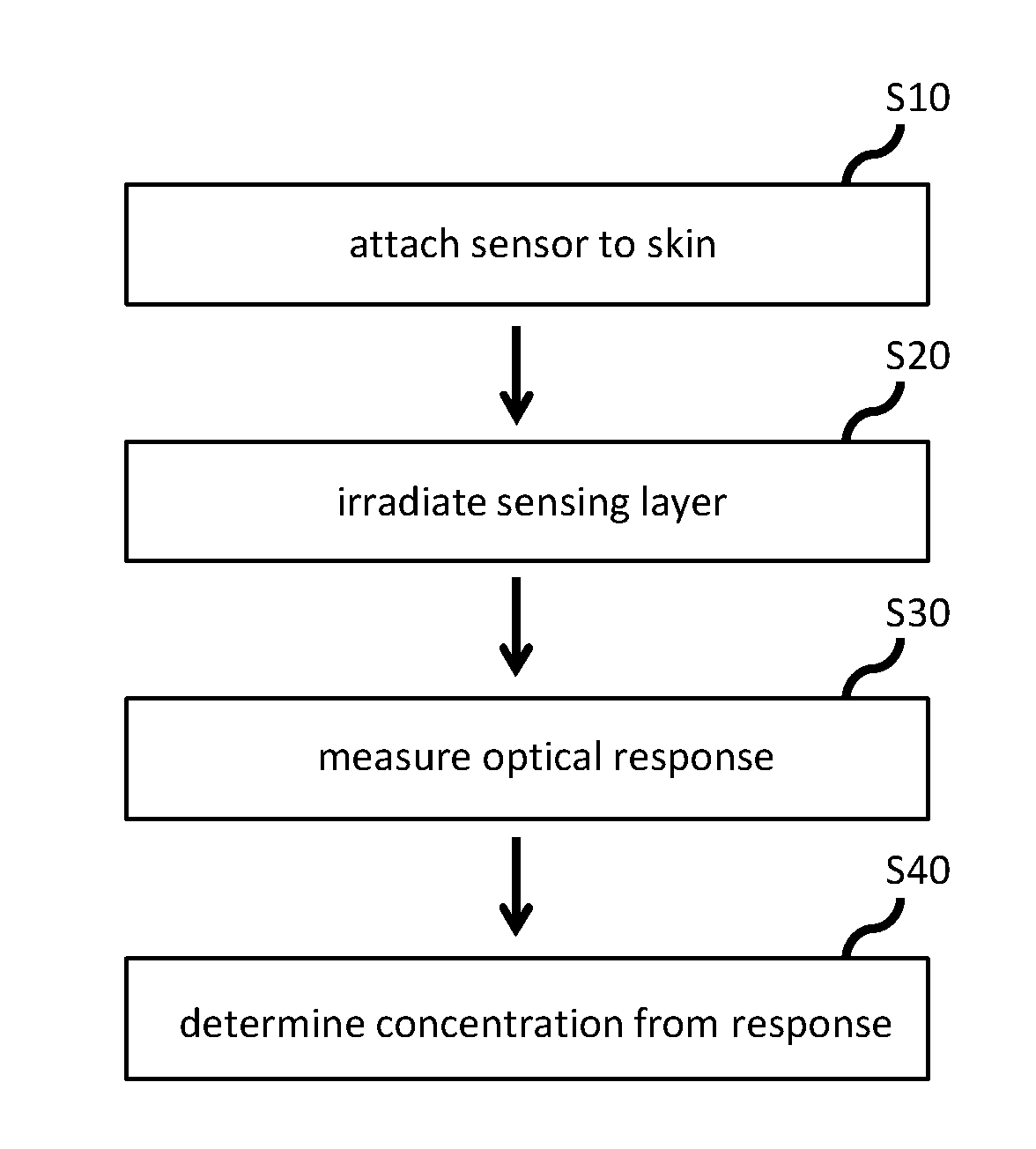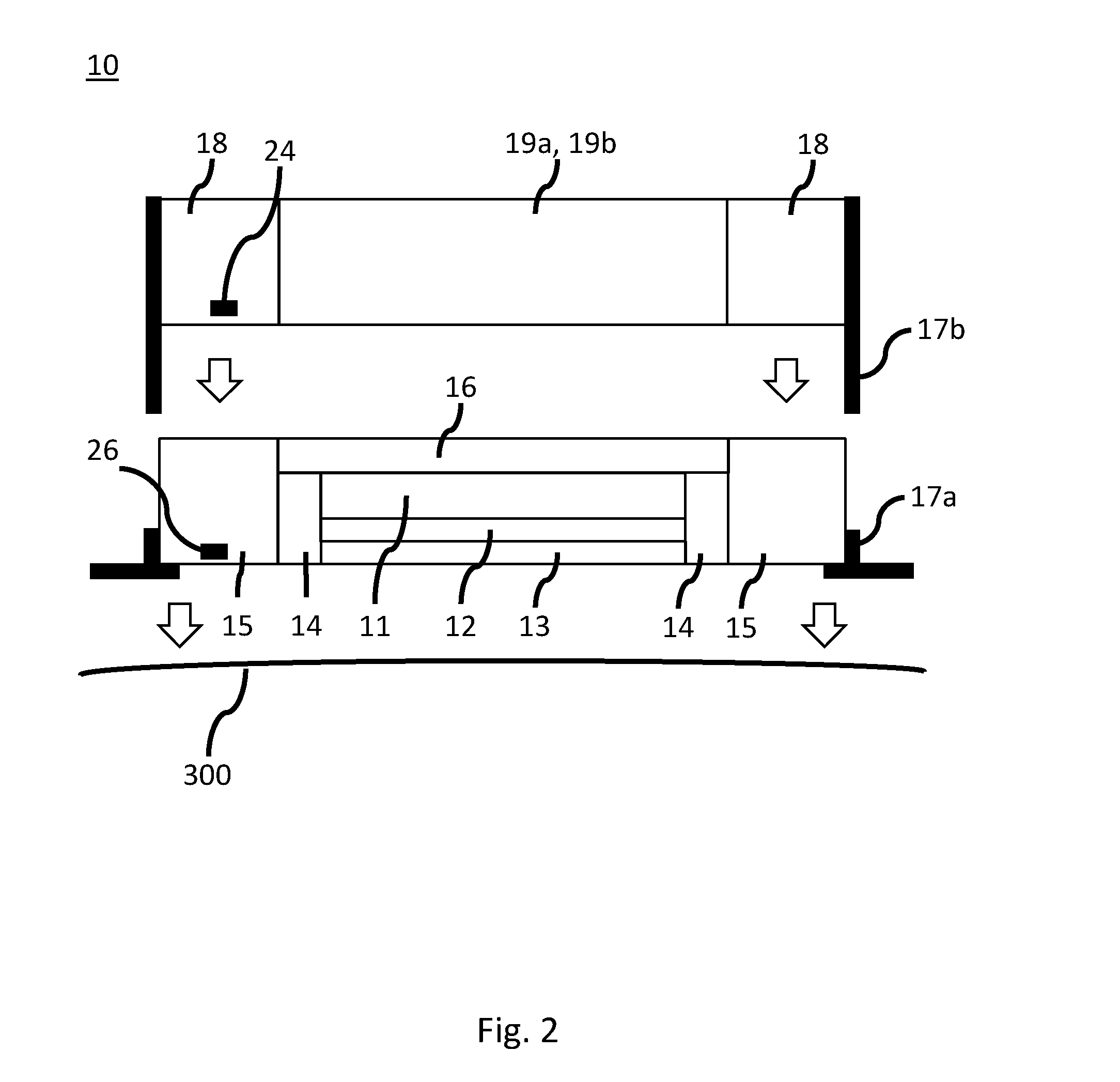Sensor for determining gas concentration
a technology of gas concentration and sensor, which is applied in the field of sensors and a method for determining gas concentration, can solve the problems of inability to reliably perform capnography, cumbersome or impossible for others, and often not reliable methods, so as to improve the accuracy of said radiation supply means, reduce thermal gradient, and improve heat distribution
- Summary
- Abstract
- Description
- Claims
- Application Information
AI Technical Summary
Benefits of technology
Problems solved by technology
Method used
Image
Examples
first embodiment
[0058]FIG. 2 shows a sectional view of an optical sensor unit 10 according to the present invention. The optical sensor unit 10 may have a circular shape and may be attached to skin 300 of a patient. The optical sensor unit 10 comprises sensor means (12, 13) comprising a gas-permeable layer 13 and a sensing layer 12 overlying the gas-permeable layer 13. The gas-permeable layer 13 may be in contact with the skin 300, wherein preferably a contact fluid is provided between the skin and the gas-permeable layer 13 in order to ensure proper gas diffusion. An optical transparent layer 11 covers the sensing layer 12. First thermal insulation means 14 at least partially surround lateral sides of the optically transparent layer 11, the sensing layer 12 and / or the gas-permeable layer 13, in order to thermally isolate said layers from its environment. An interface layer 16 is provided to cover at least the optically transparent layer 11, and serves as optical coupling. The interface layer 16 ha...
second embodiment
[0063]The optical sensor unit 10 further includes a portion 15a of the first heat conducting means 15 provided between the sensor means (12, 13), in particular the gas-permeable layer 13, and the skin 300. The portion 15a is perforated to allow gas exchange. In particular, the portion 15a may be a thin sheet of perforated metal. The metal may be the same metal the first conducting means 15 is made of. Accordingly, thermal gradients in the sensor means (12, 13) in a direction parallel to the gas-permeable layer / sensing layer are suppressed and a temperature of the sensor means is well-defined, thereby increasing accuracy of the gas concentration measurement.
[0064]FIG. 4 shows a sectional view of an optical sensing unit 10 according to a third embodiment of the present invention. The third embodiment differs from the first embodiment shown in FIG. 2 in the provision of second heat conducting means 20a, 20b. The second heat conducting means 20a, 20b comprises an extending portion 20a ...
PUM
| Property | Measurement | Unit |
|---|---|---|
| temperature | aaaaa | aaaaa |
| temperature | aaaaa | aaaaa |
| thickness d3 | aaaaa | aaaaa |
Abstract
Description
Claims
Application Information
 Login to View More
Login to View More - R&D
- Intellectual Property
- Life Sciences
- Materials
- Tech Scout
- Unparalleled Data Quality
- Higher Quality Content
- 60% Fewer Hallucinations
Browse by: Latest US Patents, China's latest patents, Technical Efficacy Thesaurus, Application Domain, Technology Topic, Popular Technical Reports.
© 2025 PatSnap. All rights reserved.Legal|Privacy policy|Modern Slavery Act Transparency Statement|Sitemap|About US| Contact US: help@patsnap.com



